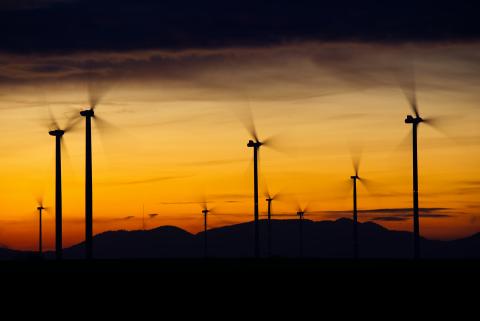IEEFA op-ed: When investors won’t back gas, why should taxpayers?

Key Findings
Manufacturing undeniably needs a secure, reliable and affordable energy source. Gas does not fit the bill.
Globally, gas prices are at unsustainably low levels yet Australians are paying way too much for their own gas, because a handful of companies on the east coast fixes the price above international parity pricing.
Gas in Australia doesn’t adhere to the normal economic rules of more supply equalling lower prices.
With their announcement this week of subsidies for a major new gas plant in the Hunter Valley, Prime Minister Scott Morrison and Energy Minister Angus Taylor have made it clear: whatever the roadmap, there’s only one destination – gas.
It is dressed up as a measure for job creation, cheaper gas for consumers and energy security. But instead of gearing the country towards investment in industries that will shape our long-term future and create jobs to get Australians back to work, throwing public money at gas will benefit only one sector – the gas industry.
Let’s be clear: manufacturing needs a secure, reliable and affordable energy source. Gas does not fit the bill.
The private sector, for the most part, can’t get away from gas fast enough.
Globally, gas prices are at unsustainably low levels. Gas companies simply cannot make money at these prices and are going broke. Yet Australians are paying way too much for their own gas. That’s because a handful of companies on the east coast controls the price and they fix it at levels above international parity pricing.
Simple, the government tells us. Increase the supply of gas and the price will come down. If only it were that easy.
It wants the private sector to step up to the plate and throw its money at “nation-building” gas projects. There’s a glaring problem here: the private sector, for the most part, can’t get away from gas fast enough. Our gas industry took $25 billion in asset write-offs in the first six months of this year alone.
Yet the government says if private industry won’t do it, it will. It proposes to build a gas-fired peaking gas plant for the Hunter Valley to “bring down prices”. But if investors won’t back it, why should taxpayers?
Gas usage for power production in Australia has fallen 58 per cent since 2014. That’s because it has become unaffordable. The only thing that can arrest that fall is government subsidies.
The gas industry around the world is in dire straits. A global oil and gas glut, brought about by building too many LNG plants and over-expanding gas field capacity, was compounded by a drop in demand due to the coronavirus pandemic, combined with a vicious price war between Saudi, Russian and US oil and gas producers. Global gas prices went into freefall and the industry entered a long-term slump.
Global gas prices have gone into freefall and the industry has entered a long-term slump.
Gas companies around the world are declaring bankruptcy and major projects are being shelved. Australian industry, too, is struggling, despite the bravado of companies such as Santos, which has been talking up the earning potential of its Narrabri gas project even as it takes a crushing $1 billion writedown on its failed east coast coal seam gas export ventures.
Is this really an industry we want to trust with our economic recovery? Not satisfied to trust the business acumen and investment expertise of the private sector, the government is proposing a program of streamlined approvals, underwriting projects or the establishment of a special-purpose vehicle with a capped government contribution to get gas projects going.
These are radical measures that would involve the government bypassing the market and attempting to “pick winners” in a high-risk field. It is backing a losing horse.
Gas in Australia doesn’t adhere – as Angus Taylor suggests it will – to the normal economic rules of more supply equalling lower prices. Gas production tripled on the east coast of Australia following the opening of the three export plants at Gladstone in 2014. Prices also tripled. Essentially, we pay more than our customers in Japan do for Australian-sourced gas.
The Australian Competition and Consumer Commission has clearly shown that gas sets the price for wholesale electricity prices in the national electricity market as it is the most expensive source of generation. It has reported repeatedly since 2015 on the price-fixing, and it’s been repeatedly ignored by those in power. Their “solution” – opening more high-cost gas fields – simply plays into the cartel’s hands. It will export existing low-cost sources of gas and burden the domestic consumer with high-priced gas out of, for example, the Narrabri field.
Gas sets the price for wholesale electricity prices in the national electricity market
But high domestic prices have led to lower consumption. Gas usage in the domestic Australian market is down 21 per cent since 2014. It is cheaper to heat your home with an air-conditioner and cook with an induction cooktop. Nothing in the government’s plan mitigates the price-fixing problem.
Manufacturers are already beginning to move away from gas, with readily available heat-pump technology that is up to five times more efficient than gas-fired power quietly being installed in factories, meatworks and shopping centres across the country.
The Australian Energy Market Operator, the only agency to model a future electricity grid, has shown that by 2040 the role of gas in a renewable-rich grid will be smaller than today. The government is not taking the advice of its experts in the energy policy sector. Rather, it pins its hopes on a declining industry and exposes taxpayers to the risk of stranded assets and expensive white elephants. It isn’t just uneconomic – it’s irresponsible.
Unlike the federal government, every state and territory has some sort of net zero-emissions target, which does not align with gas expansion.
Meanwhile, while global gas prices are currently very cheap, supply is shrinking, companies are going bankrupt and exploration and production budgets are being slashed. There will be a price rebound and gas will prove to be a very expensive source of power in the medium term. If we see a change of government in the US, a carbon price is inevitable.
Gas is a dying industry. Subsidising gas is flogging a dead horse and taxpayers will pay for it.
Bruce Robertson is a gas/LNG analyst with the Institute for Energy Economics and Financial Analysis
This op-ed appeared in the Sydney Morning Herald on September 16, 2020.
Related items
IEEFA Australia: COVID-19 Advisory Board wants government to subsidise failing gas industry
IEEFA Australia: The state of NSW should not sponsor a loss-making, wealth destroying industry












